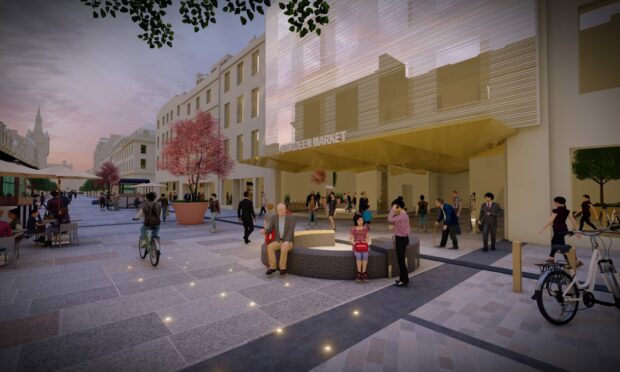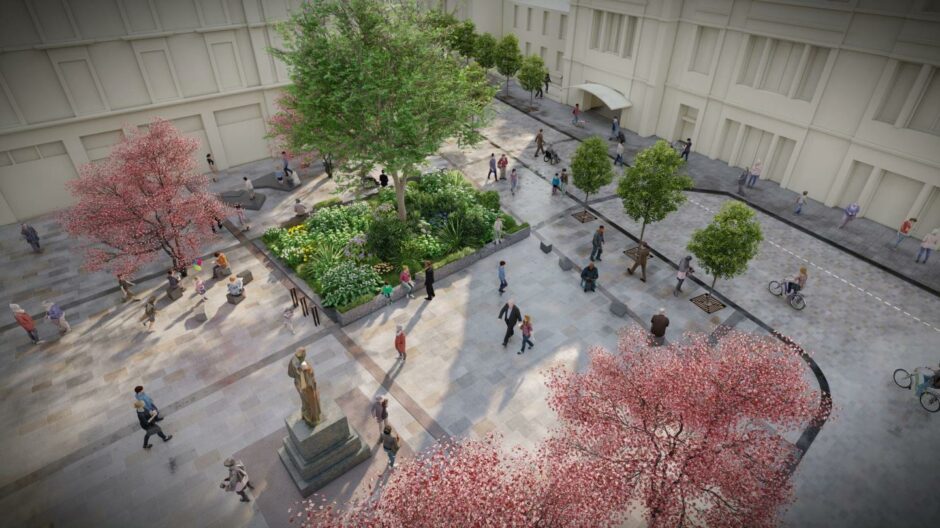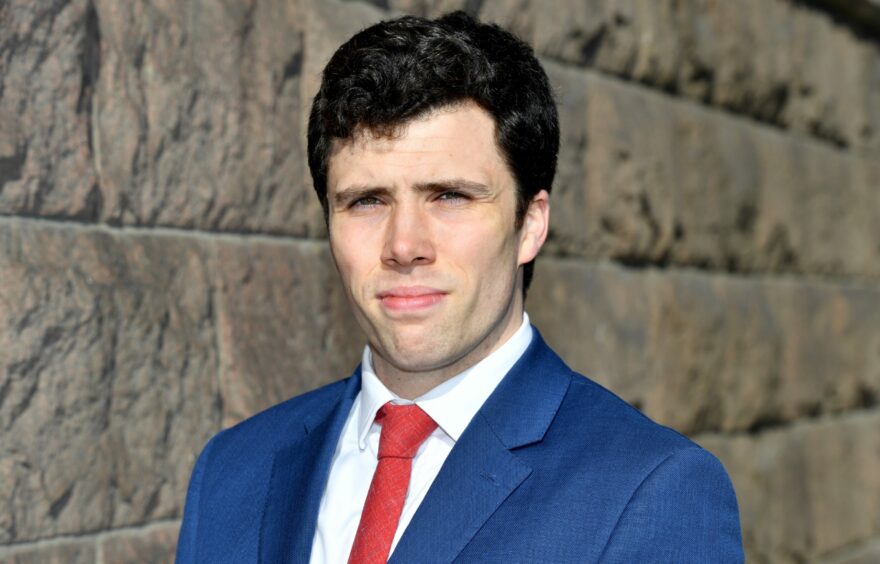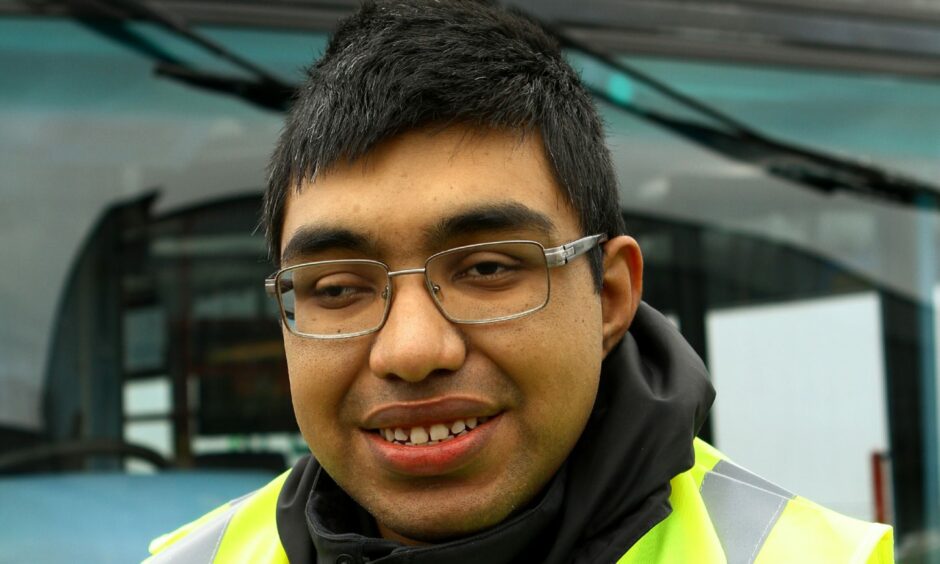Plans to pedestrianise Union Street have been approved – despite claims it would “effectively engineer” those with disabilities out of the city centre.
Councillors voted through the long-debated proposals to reclaim the Market Street to Bridge Street from traffic, including buses as part of a far-reaching set of ideas covering the city centre and the beach.
The £150 million refresh of the council’s masterplan also included plans for a new £50m market and investment – complete with new football ground – at the seafront.
Previously, the cost of the market development – backed with £20m from the UK levelling up fund – on the former British Home Stores and indoor market sites was estimated at £75m.
Union Street pedestrianisation is an idea which first hit the front page of The Evening Express as a serious proposal in June 1986, and one that has since been debated on numerous times over the 35 years since.
Just for all those asking how long @AberdeenCC has been contemplating Union Street pedestrianisation… My archive searches say we first mentioned it as a permanent move on June 18, 1986. pic.twitter.com/8eV7Y4X9Je
— Alastair Gossip (@AlastairGossip) November 12, 2021
This latest vote moves the project on from the council and LDA Design drafted ‘concept’ to a detailed designing process.
Work could begin on permanently changing the face of the Granite Mile next summer.
Not quite Easy Street for admin on pedestrianisation
The administration looked to be split on what to do with Union Street, with city centre masterplan lead Marie Boulton, an independent, breaking away from her Conservative and Aberdeen Labour coalition partners.
The difference? The two larger parties in the administration wanted to press on with pedestrianisation – and not reinstate bus access to the already closed stretch in the meantime – and Mrs Boulton, who wanted to maintain access for bus passengers while options are explored.
Even without her vote, the administration overcame the SNP amendment, which called for the Spaces For People closure to be removed at pace to allow buses and taxis back on the long-closed part of the Granite Mile.
The SNP was backed by Liberal Democrat group leader Ian Yuill, resulting in a 4-4 tie.
Finance convener Ryan Houghton used his casting vote to pass the recommendations of officers.
Those included full pedestrianisation of Union Street Central, with exceptions for cyclists and time-limited servicing, and a reprioritisation of Market Street, Bridge Street and Guild Street in favour of buses, taxis and bikes.
It will also progress plans to pedestrianise Schoolhill and Upperkirkgate between Harriet Street and Flourmill Lane, which is currently closed off – as is Union Street Central – as part of the Spaces For People physical distancing work.
Along with that, there will be a ban on right turns for all but buses, taxis and bikes out of Union Terrace into Rosemount Viaduct.
Council leader Jenny Laing said the £150m refresh of the city centre masterplan was the “next step in the city’s journey”.
Along with the city centre roads overhaul, proposals to build a new market and potential beach stadium were also approved.
Mr Houghton agreed it was a “huge milestone”, adding afterwards: ““The plans will not only act to heal the city from the economic damage inflicted by Covid by breathing new life into our city centre, boosting job creation, and promoting a wealth of opportunities to allow businesses and traders to thrive.
“Councillors will have the opportunity to make decisions on the plans in the New Year.
“The last thing anyone wanted was more dithering and delay – we had resounding support from business organisations who want to see the city moving forward and we also had overwhelming support from the recent survey of 7,000 people.
“So the message was clear and now the direction is clear; it is now about getting on with the work and getting these proposals brought to fruition.
“Exciting changes are happening in Aberdeen and they are a hugely ambitious statement of intent.”
However, opponents hit out at the £150m masterplan – spanning far more than just the transformation of the Granite Mile – essentially being decided by a handful of councillors from a minority administration.
Liberal Democrat group leader, Ian Yuill, said: “The decisions before the committee were the most important the council has faced since I was first elected over 27 years ago.
“They will affect our city for decades to come. Yet the vast majority of councillors had no say – these proposals were voted for by just four councillors and only passed on the convener’s casting vote.
“It is shameful that the Conservative and Labour councillors proceeded to make this decision after hearing a plea from a representative of the chair and vice-chairwoman of Aberdeen’s Disability Equity Partnership for more time to be allowed for people to be consulted about the proposals.”
Claims: Union Street pedestrianisation risks driving the disabled out of the city centre
Despite decades of talk, councillors seemed shocked on hearing from an expert on disability rights and access, Hussein Patwa.
Those heading up the Aberdeen City Disability Equity Partnership had asked him to speak on their behalf – and he urged a six-month cooling-off period to allow fuller consultation with those who would be worst impacted by pedestrianisation.
Mr Patwa, himself partially blind, told councillors: “The proposal as stated would have a devastating effect on people with disabilities, the elderly, young families, those who rely on public transport and people experiencing mobility difficulties because of life-limiting conditions, menopause, illness, accident, or injury by effectively engineering them out of the heart of the city.
“The absence of mitigations to those facing mobility challenges, however caused, will result in their de facto exclusion from the city centre and all it may offer.
“The partnership today seeks nothing more than that you pause contemplation of any decision relating to these proposals to allow for engagement activities to be undertaken first, for meaningful consultation and dialogue with them and other interested representatives of society who would be most impacted by these changes, including those such as the disabled, elderly or digitally insecure who have hitherto been unable to interact with these proposals, and for mitigations proposed by the public (experts through their own lived experience of using, and barriers to using the city) to be rationally considered, modelled and deliberated.
“The proposals as laid before you, predicated on the full pedestrianisation of Union Street Central, will see a once vibrant, welcoming, and resourceful city become a ghost city and, in reality, a no-go zone for a significant majority of disabled people and others.
“The economic toll on a city still recovering from the ravages of the Covid19 pandemic through redirection of the disposable income of these citizens will be incalculable.”
Six months of consultation on refreshed city centre and Union Street pedestrianisation
Councillors were recommended to sign off on pedestrianisation of the Market Street to Bridge Street stretch, not least as it is directly tied to the UK Government funding for the new market.
And the authority’s masterplan manager, Sandy Beattie, promised members of the city growth (finance) committee that, if approved, there were already plans for a full six months of consultation at the turn of the year – as detailed proposals for the city’s main thoroughfare are drawn up.
“We were clear about putting a set of principles together just now and keeping people informed of the progress as we move along,” he said.
“A lot of this information has come to us in the last week to 10 days, so it has been quite difficult for us to consult on that.
“In terms of the next stages in the engagement, we have allocated six months at the start of next year to undertake engagement as detailed decision progresses to ensure all parties are actively engaged.
“We are very much at a concept stage and are seeking approval to move into that detailed design stage at which we would actively engage and ensure the disability equity partnership’s concerns are addressed.”



